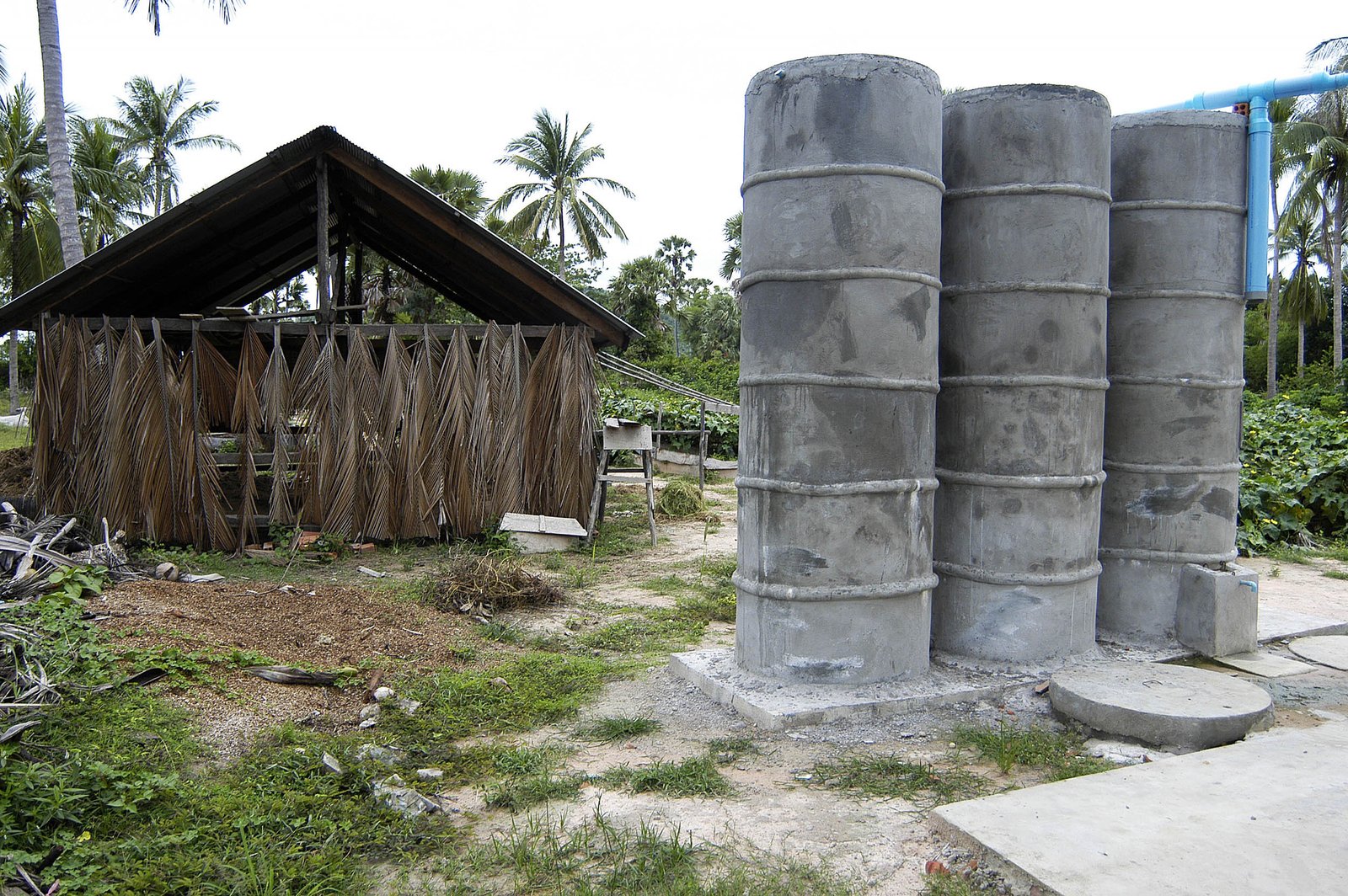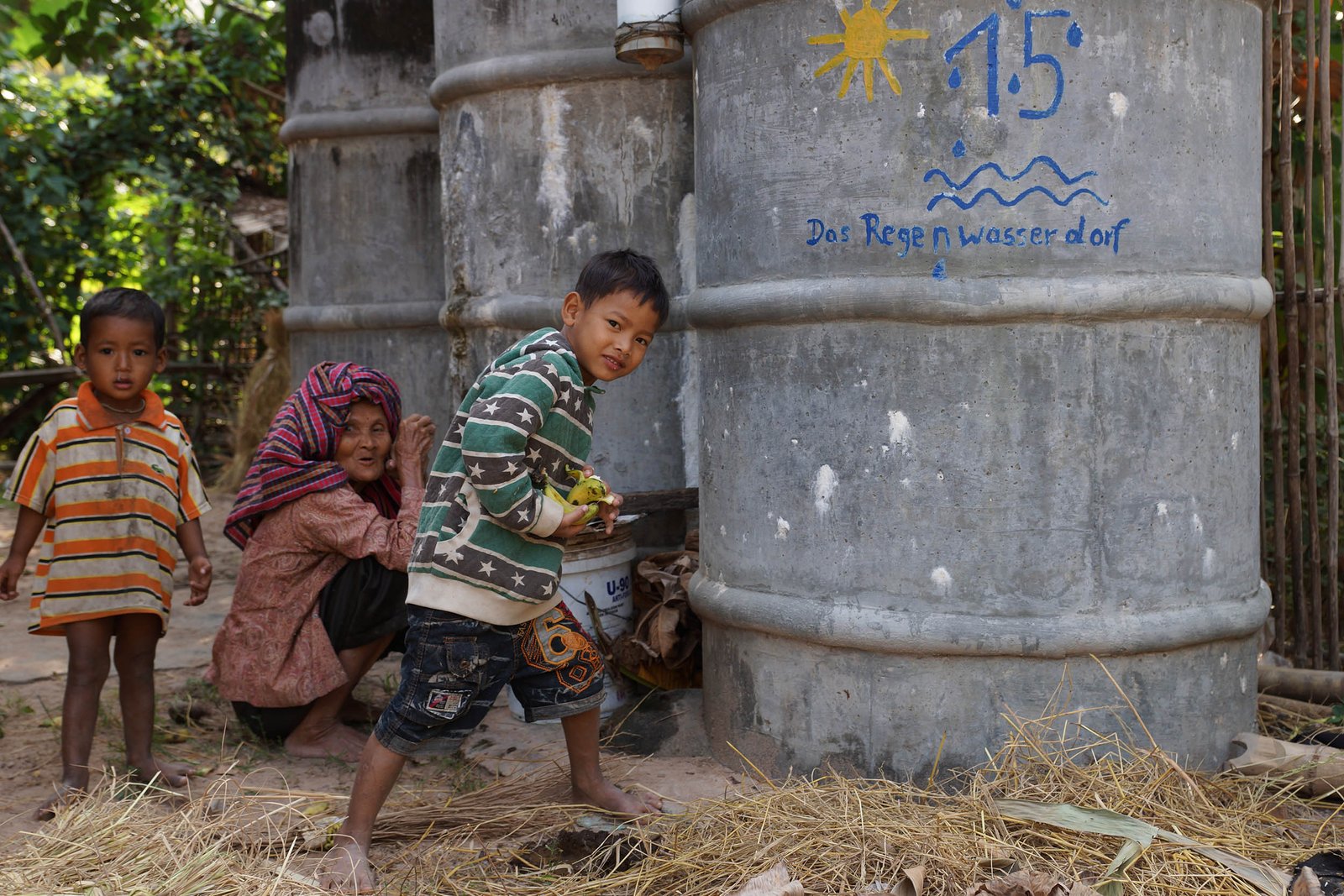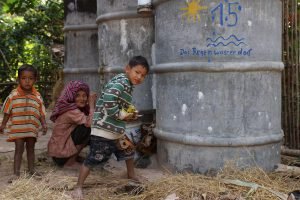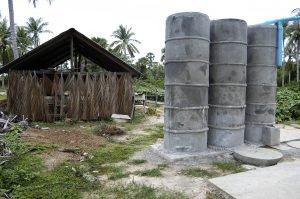Rainwater
Clean water for all!
Why does this project exist? To have only dirty pond water or arsenic-containing well water available in the worst dry season, to see people suffering from typhoid fever who have no money for medical expenses - that made me initiate this project. Having to travel 12km by motorbike for drinking water made me feel the water problem first hand. Blood poisoning increased my desire to support these people. Then, at the doctor's office, I saw a huge cement rainwater reservoir that stores water from one rainy season to the next. Spurred on by this, I gathered more information and ended up with the Rainwater Cambodia organisation. I was able to realise the construction of the first rainwater set with the money from three days of filming for the movie Le Grand Empire du Tigre, which I earned in Phnom Penh as a "Little Movie Star". The plan to provide all families in the village of Tropeangs Dock with a rainwater set within 3 years was a success with the help of the Vienna Development Aid Club, the support of my colleagues at BRG X Ettenreichgasse Vienna and Sorya. Thus, Cambodia's very first rainwater village exists since 2008!
Dorothea Schaffernicht, Vienna
An initiative of Sorya's volunteer













